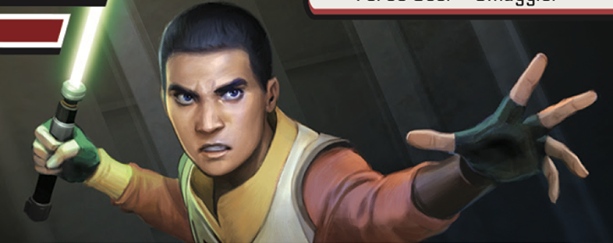Introductions
Hi everyone, my name’s Noa, but most of you will probably already know me as TVboy from the Slack channel, FFG forums or my Youtube channel. A lot of you already know me from IACommand, where I post Imperial Assault gameplay and content, and have probably seen me play or played against me at some point, so a lot of you know what kind of player I am and that I enjoy playing skirmish and enjoy playing Rebel and melee focused lists and also enjoy running tournaments and trying to maintain a deep understanding of the rules of the game. But as a newly appointed member of the IACP Steering Committee who’s been designing and helping design a lot of cards lately, I thought it would be fun to talk about what kind of a designer I am, and what my style is when it comes to helping design and develop cards for Imperial Assault.
I’ve enjoyed and dabbled in designing cards for Imperial Assault even before joining the IACP, both for skirmish and campaign. I’ve designed deployment cards for skirmish from various Star Wars media (and even a couple of non Star Wars characters). I’ve designed 2 skirmish maps meant to be played by 3 players, and at one point I was even working on a custom campaign where the heroes were Imperial figures and the Rebel player was the overlord player, and even finished 5 missions, 6 heroes and 1 Rebel class deck before I realized I would never have time to actually playtest all the missions on my own and released the assets to the community last year.

Upon reflecting on my own design proclivities and preferences while working with the committee on the upcoming season 4 and updating cards from season 3, I realized there are 3 main things that I like to see in individual card designs, both for Imperial Assault and any game component in general. The 3 things I love to see are designs that do something completely new and different from anything else, designs that strongly reflect the themes of their source material, and designs that can tell a story when you look at it. Let’s talk about what these qualities mean to me and give some examples.
Show Me Something That’s Never Been Done
I love it when a card explores a completely unexplored design space within the rules of Imperial Assault to show us something that we’ve never seen done before. It’s fine to see a figure that moves a bit different or shoots a bit different from other figures, but I love it when a figure does something completely different aside from just moving and shooting or helping other figures move and shoot. When a card does something totally new and different in the game, as a player it gets my brain turning and I have to think about rules and interactions and strategies that I’ve never thought about before. This gives me that same rush of discovery and newness that I get when I’m learning a game as a new player and everything is still brand new and fresh and interesting. In contrast, when an ability is just something we’ve already seen in the game before, my brain can just say “oh yeah, this works just like this other ability that I already know, I already know how that works” and my brain just kind of shuts off because I don’t have to think that hard about how to evaluate the ability.
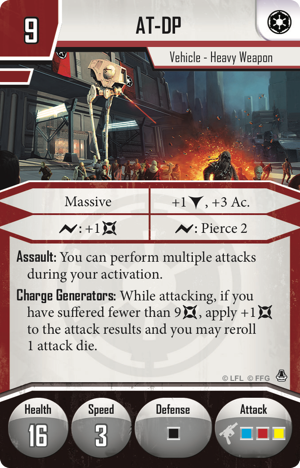
The AT-DP is still the only figure whose offensive stats change depending on how much damage it’s taken, which creates an interesting tension for keeping it healthy rather than just keeping it alive.
Show me something Thematically Resonant
I love it when a game is able to forge a connection between its gameplay and mechanics to its theme and source material. Especially when it’s a theme I love, and Imperial Assault has one of the best source materials out there, Star Wars! Star Wars is such a rich source of thematic material with so many diverse characters and settings and narratives. I think a great design is able to take a source material’s core defining elements and translate them into card text. I love it when I can look at a card that was designed for a character that I know and love from the source material and say, “yes, this card was perfectly designed to match this character”.
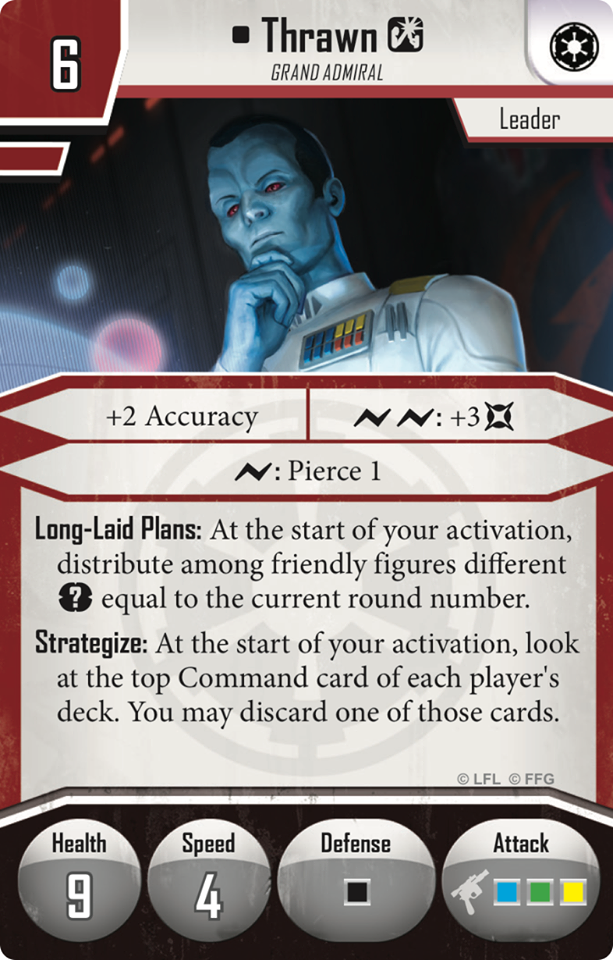
Thrawn’s Strategize and Foresee ability perfectly represent how Thrawn is able to gain insight into both his opponent and the future by peering into his opponent’s command deck, and Long-Laid Plans ties into Thrawn’s ability to outlast his opponents and play the long game.
Show me something that Tells a Story
I love it when a card can use all of its components to tell me a story about the thing it’s based on. There’s even a term for this concept, narrative ludology or narratology, the idea that gameplay actually creates and is interpreted by its players as a story. That story can play out just on the card as you’re reading it, or even better it plays out on the table when you’re actually using the card in a game. And even better is when that story involves the opponent and gives them a role to play in that story. And of course since this is a Star Wars game, the height of narrative card design is when the story that a card is telling in some way matches the source material and thus evokes a narrative resonance between the card and the fictional character or object that it’s depicting.
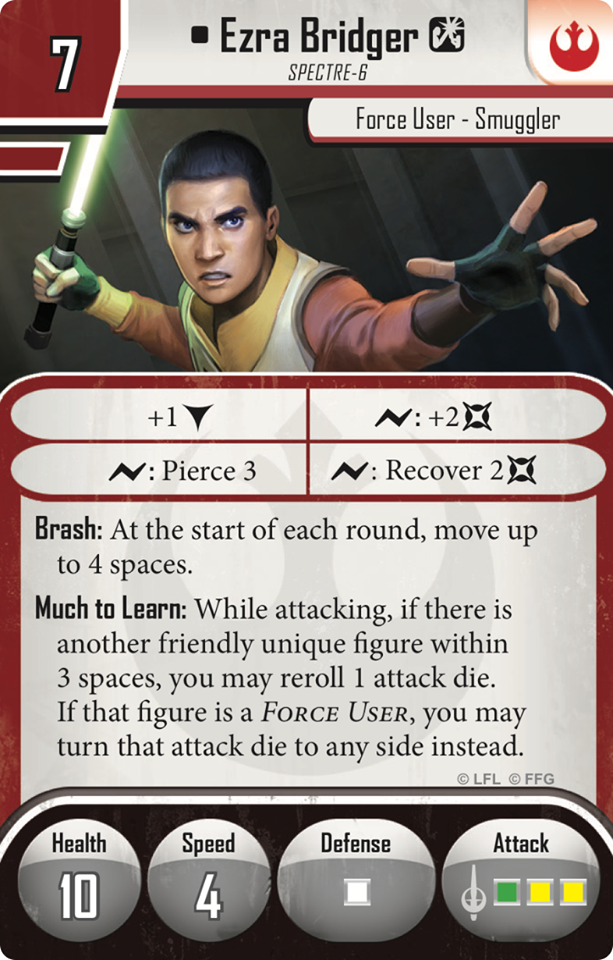
The abilities on Ezra’s card create a gameplay story that matches his character from the source material. He is Brash, headstrong, and impetuous, and originally likes to be independent and do things his own way, but doing so leaves him without the ability to modify his attack, which has great potential but can swing wildly. If he can coordinate his movements so a friend is nearby, he can increase his odds of success, but what he really needs is a Jedi mentor nearby to help him master his full potential with the Force.
I’ll leave you with the Imperial Assault card that I think encapsulates all of these features of great card design. Hondo Ohnaka is truly a friend for hire. His Negotiate ability is unique both in that it involves one player paying another player VPs, and is an attack modifier that allows the opponent to choose which effect they want to be applied. This unique ability creates interesting new things to think about during gameplay that involves Hondo. Do you pay Hondo when he shoots you to try and preserve that high value figure? What if the opponent has Element of Surprise or Tools for the Job? Do you go for an objective early in the game you otherwise wouldn’t just so you can have the option to pay Hondo when he attacks you? That ability and Hondo’s other ability What’s Yours Is Mine, are both incredibly thematic to Hondo’s character. And it all comes together to tell a story that matches the character that we see in the source material, specifically the Rebels cartoon. You might pay off Hondo and think you’ve got him under control, but if you’re not keeping an eye on him he might just help himself to your stuff while you’re not looking.
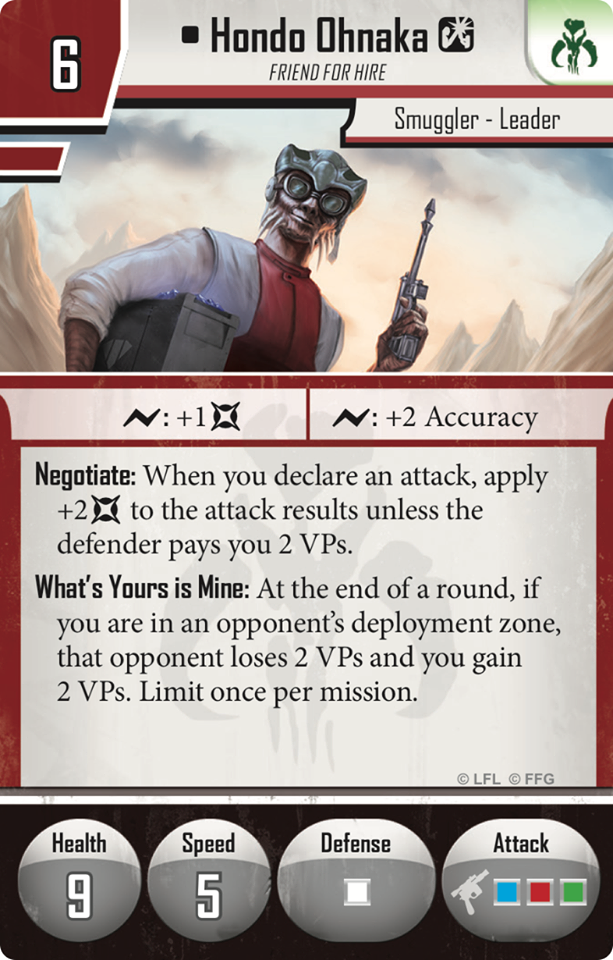
I hope you enjoyed this piece on what I enjoy seeing in game design. Look forward to more articles in the future from me about game design, I’m especially keen on doing some articles about individual card stories from season 3.2 and season 4, as well as articles about power level, balancing and competitive play. See you all next time!

